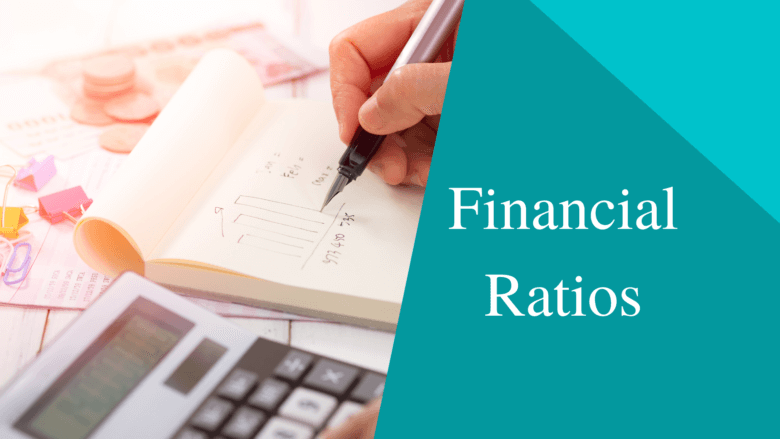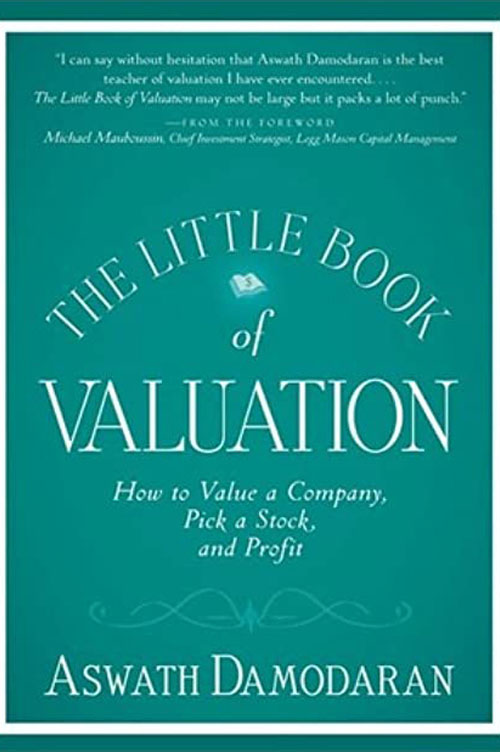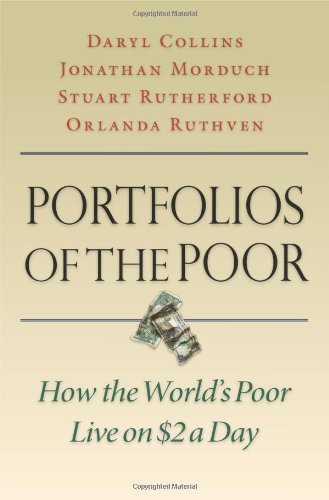Meaning
Financial Ratios are created to find numerical value to gain meaningful information about a company. This value/ratio is not a calculation but an explanation of the economic statues of a company in terms of business liquidity, solvency, leverage, growth, margin, profitability, valuation, return on investment, and many more.
Financial Ratio is useful tool for business managers and investors to analyze and compare financial relationships between two financial statements. The information gathered from financial ratio analysis is a valuable data to a manager who have to make financial decisions for the business and to other external parties (example, investors), so they can analysis the company’s financial health.
Why Financial Ratio Analysis is important?
Financial ratio allows analysts and investors to convert raw financial data into actionable information. Using this information, investors can conduct fundamental analysis, evaluate performance of a business, compare with other competitors in industries, etc.
Types of Financial Ratios
- Profitability Ratio
- Liquidity Ratio
- Leverage Ratio
- Market Ratio
- Activity Ratio
- Stability Ratio
- Coverage Ratio
- Control Ratio
(I) Profitability Ratio
Profitability ratio measure a company’s ability to generate profit in terms of its revenue, operating costs, shareholder’s equity, and assets of a company. In simple words, it reflects how well a company can convert its resources and assets into profit.
Note – Many factors influence profitability ratio such as price, volume, expense, purchase of new assets, or borrowing of money. The most common profitability ratio are –
1) Return on Assets (ROA)
ROA measures a company’s ability to generate profit from its assets. It is expressed as a percentage. It indicates how much income can be gained from total assets of a company. Generally, ROA above 5% is considered good in business.
Formula:
| ROA = Net Income/Total Assets × 100 |
2) Return on Equity (ROE)
ROE measures company’s ability to generate profit from its shareholders’ equity. It is expressed as a percentage.
Formula:
| ROE = Net Income/Shareholders’ Equity × 100 |
3) Profit Margin
This is a straight forward way to calculate company’s profit. It measures company’s profit through sales of company’s products and services.
In simple terms, calculating how much income is received from selling a product. The higher the profit margin, means the company makes more profit on each sale. Generally, a profit margin of 5% on each sale is low, 10% is average, and 20% or above is good.
Formula:
| Profit Margin = Profit/Revenue × 100 |
4) Earning Margin
This ratio measures the final net profit of a business. It is expressed as percentage.
Formula:
| Earning Margin = Net Income/Turnover × 100 |
5) Return on Capital Employed or Return on the Investment
This ratio calculates profitability in relation to the total capital employed in a company.
Formula:
| Return on Capital Employed = Profit before Interest and Tax / Total Capital Employed |
6) Earnings per Share (EPS)
EPS is the portion of a company’s profit that is allocated to every individual share of the stock. The higher the earnings per share of a company, the better is its profitability.
Formula:
| EPS = Earnings after Taxation – Preference Dividend/Number of Ordinary Shares |
(II) Liquidity Ratio
Liquidity ratio measures company’s ability to fund any short-term debt obligation without raising any additional capital in the business. These ratio can be used for internal analysis such as to evaluating Company’s financial health or for external analysis such as comparing a business with its competitors.
If value is greater than 1, means the short-term obligations can be covered in available funds. Similarly, if value is less than 1, means the short-term obligations cannot be covered in available funds. Higher the value, the better the company’s financial health.
Types of Liquidity Ratio are –
1) Current Ratio
Current ratio also called as the working capital ratio, measures a firm’s ability to cover its current liabilities with its current assets.
If the ratio is above 1, it indicates that company has more current assets than current liabilities. Similarly, if the ratio is below 1, it indicates that company has more current liabilities than current assets.
Formula:
| Current Ratio = Current Assets/Current Liabilities |
2) Quick Ratio
It is also known as acid-test ratio. It measures a firm’s immediate ability to cover its current liabilities with its liquid assets such as cash, cash equivalent, securities, and accounts receivable. It excludes inventory and prepaid expense, because these can takes more than weeks to convert into cash.
If the value is above 1, means the company is able to immediate pay off its current liabilities using its liquid assets. Similarly, if the value is below 1, it means the company cannot pay off its current liabilities immediately.
Formula:
| Quick Ratio = Liquid Assets/Current Liabilities |
3) Cash Ratio
Cash ratio measures a firm’s ability to cover liabilities using only cash and cash equivalent. It means how many times a firm can pay its short term debt using cash and cash equivalent.
If the ratio is above 1, it means that a firm can pay off its debt immediately by cash. Similarly, if the ratio is below 1, a firm cannot pay off its debt immediately.
Formula:
| Cash Ratio = Cash and Cash Equivalent/Current liabilities |
4) Absolute Liquidity Ratio
This ratio helps in calculating actual liquidity, and inventory and accounts receivable are excluded from current assets.
Formula:
| Absolute Liquidity Ratio = Cash + Marketable Securities + Net Receivable and Debtors |
(III) Leverage Ratio
These ratio provides information about company’s capital structure and ability to pay obligations timely. It measures the total debt of a company in relation to its assets and equity.
Types of Leverage Ratio are –
1) Debt Ratio
This ratio calculates a firm’s debt in relation of assets. It indicates the percentage of a firm’s total assets that can be used to pay off outstanding debt.
If the ratio is above 1, means that the company has more amount of debt than the value of total assets. Similarly, if the ratio is below 1, it means that the company has more amount of asset than outstanding debt. The higher the value means more amount of leverage.
Formula:
| Debt Ratio = Total Liabilities/Total Assets |
2) Debt to Equity Ratio (D/E)
The debt to equity ratio calculates a firm’s debt in relation to its equity. These ratio evaluate whether shareholder’s equity can cover total liabilities.
Same as Debt Ratio, here, if the ratio is more than 1, means the company has more debt to pay and therefore more leverage. Similarly, if the ratio is less than 1, means the company has less debt to pay and therefore less leverage. Higher value is not always a bad sign because capital structure, industries, and other variables can influence the debt to equity ratio.
Formula:
| Debt to Equity Ratio = Total Liabilities/Total Shareholder’s Equity |
3) Interest Coverage Ratio
It is also called time interest ratio. It calculates the total number of times a firm can cover the debt interest using only its Earnings before Interest and Taxes (EBIT). This ratio is generally calculated by investors, creditors, and lenders to analyze the level of risk involved in investing in a firm.
If the ratio is above 1, means a firm can easily pay debt interest using only its EBIT. Similarly below 1, means a firm cannot pay. Higher the value means it’s affordable for business to overcome from its debt more easily and quickly.
Formula:
| Interest Coverage Ratio = EBIT/Interest Expense |
4) Debt Service Coverage Ratio (DSCR)
DSCR is a measure of calculating a firm’s ability to pay its outstanding debt (such as interest, principal and lease payments) using its operating income. These ratio is used by investors and other lenders to evaluate risk level of investing in a firm.
If the ratio is above 1, means a company has enough cash flow in a business to cover the debt. Whereas, if the ratio is below 1, means a company does not have enough cash flow to pay outstanding debt.
Formula:
| DSCR = Net Operating Income/Total Debt Service |
5) Operating Leverage Ratio
This ratio calculates the percentage change in operating profit relative to sales. It indicates how sensitive the operating income is to change in revenues.
Formula:
| Operating Leverage Ratio = % change in EBIT/ % change in Sales |
6) Financial Leverage Ratio
This ratio calculates the percentage change in net profit relative to operating profit. It indicates how sensitive the net income is to change operating income.
Formula:
| Financial Leverage Ratio = % change in Net Income/ % change in EBIT |
7) Total Leverage
This ratio calculates the percentage change in net profit relative its sales. It indicates how sensitive the net income is to change in sales.
Formula:
| Total Leverage Ratio = % change in Net Profit/ % change in Sales |
(IV) Market Ratio
It is also called as price ratio or valuation ratio. It is used to evaluate a share price of a firm. It determines whether a company’s share price is overvalued, undervalued, or fair. This ratio is used by investors to evaluate potential investment on company’s stock and other securities.
Types of Market Ratio are –
1) Price-to-Earnings (P/E) Ratio
The ratio measures a share price of a company in relation to its earnings per share. It determines whether or not the market price of a share reflects the company’s earnings potential. This metric can vary from industry to industry, means there is no benchmark to determine a good P/E ratio.
In general, high P/E ratio means that the stock is overvalued or it is expected to have growth in near future. Whereas, low, P/E ratio means the stock is undervalued or low expectancy of growth in future.
Formula:
| P/E Ratio = Share Price/Earnings per Share |
2) Price/Earnings-to-Growth (PEG) Ratio
This is another metric which is used to identify the exact value of a stock whether it is under-valued or over-valued. Here, if the ratio is below 1, means that the stock is undervalued. Similarly, if the ratio is above 1, means that the stock is over-valued.
Formula:
| PEG Ratio = P.E Ratio/EPS Growth |
3) Price-to-Sales (P/S) Ratio
This ratio is used to measure a company’s share price in relation to sale of per share. This ratio is similar to P/E ratio, but uses revenue instead of earnings. P/S ratio is useful for analyzing companies that do not generate profit within 1 year. It can also be used to compare other businesses of same industry.
Formula:
| Price to Sales ratio = Share Price/Sales per Share |
4) Price-to-Book (P/B) Ratio
This ratio calculates a company’s share price in relation to its book value of stake-holders’ equity. It determines the price investors must pay for book value of share.
The lower ratio means the stock is underpriced, whereas the higher value means the stock us over-priced. P/B ratio vary from industry to industry, which makes it difficult to calculate which percentage is good.
Formula:
| Price-to-Book Ratio = Share Price/Book Value per Share |
5) Dividend Yield
This ratio measures the company’s annual dividend payouts to its shareholders. It determines the exact value of dividend shareholders receive for their stake holding in a company. These ratio is best tool for those investors who prioritize dividend payout over capital gains, as it helps to measure return on investment per share.
If the number is higher means, a shareholder will receive higher amount on dividend. Whereas a lower number means, a shareholder will receive less amount on dividend. Average ratio can vary from companies and industries, a dividend yield 3% to 5% is considered as good.
Formula:
| Dividend Yield = Dividend per Share/Share Price ×100 |
6) Dividend Payout Ratio
This ratio measures the total amount of dividend a company pays to its shareholders in relation to its net income.
It determines the proportion of a business earnings that get distributed as dividend payout. The remaining amount is held as retained earnings which can be used for other purposes such as operating activities, repayment of debt, investments, etc.
Depending on the company and industry, generally 40% is considered as good dividend payout ratio. From company’s side, higher value means more of the company’s earnings are paid as dividend, whereas lower value means less earnings are paid.
Formula:
| Dividend Payout Ratio = Dividend Paid/Net Income × 100 |
(V) Activity Ratio
Activity Ratio identifies how a company uses its available resources to generate sales. These ratios are generally used by investors to analyze the efficiency of a business operation, the speed in cash collection, the rate of inventory when it is turn over, and so on. It is also useful for companies to measure an improvement in performance, comparing with other business, etc.
Types of Activity Ratio are –
1) Asset Turnover Ratio
This ratio measures how well a company generates sales from its assets. In simple words, it is the value of sales a company earns for its total assets.
Higher ratio means greater value of sales can be generated from assets. Similarly, lower ratio means lesser value of sales can be generated from assets.
Formula:
| Asset Turnover Ratio = Net Sales/Average Total Assets |
2) Inventory Turnover Ratio
This ratio determines the number of times a firm sells (or replaces) its inventory within a time period. This ratio can tell investors how a company’s inventory is managed and how quickly the products/services are being sold.
Here, the higher value means that the products are being sold quickly or the inventory level is insufficient. Whereas, the lower value means products are being sold slowly, or the inventory level is in excess.
Formula:
| Inventory Turnover Ratio = COGS/Average Inventory |
3) Debtors/Receivable Turnover Ratio
This ratio measures how many time a firm collects its accounts receivable in a time period. It determines the company’s efficiency in collecting money from its clients.
The higher ratio means company is more efficient in collecting payments. Lower ratio means company is inefficient.
Formula:
| Receivable Turnover Ratio = Net Credit Sales/ Accounts Receivable |
Using the value obtained from this ratio, investors, analysts and company can identify the number of days it took a company to collect its account receivable. To do this, divide 365 by the value obtained.
Example, Receivables Turnover in Days = 365/Receivable Turnover Ratio
4) Payable Turnover Ratio
It is also called as accounts payable turnover ratio. This ratio measure the number of time a firm pays its accounts payable in a time period. It determines the company’s efficiency to pay its creditors (creditworthiness).
Here, higher value means a company is more efficient in paying its creditors. While, lower value means a company is less efficient.
Formula:
| Payable Turnover Ratio = Net Credit Purchases/ Accounts Payable Turnover Ratio = Net Credit Sales/ Accounts Receivable |
Using the value obtained from this ratio, investors, analysts and company’s manager can identify the number of days it took a company to pay its creditors. To do this, divide 365 by the value obtained.
Example, Payable Turnover in Days = 365/ Payable Turnover Ratio.
5) Capital Turnover Ratio
This ratio measures the firm’s effectiveness of using its financial resources.
Formula:
| Capital Turnover Ratio = Net Sales (Cost of Goods Sold) / Capital Employed Turnover Ratio = Net Credit Sales/ Accounts Receivable |
6) Net working Capital Turnover Ratio
This ratio identifies whether or not company’s working capital has been effectively utilized in making sales. Net working capital proves the excess of current asset over current liabilities.
Formula:
| Net Working Capital Turnover Ratio = Net Sales / Net Working Capital Turnover Ratio = Net Credit Sales/ Accounts Receivable |
7) Cash Conversion Cycle
This ratio measures the total time taken by a company to convert its cash outflow into cash inflows (returns).
Formula:
| Cash Conversion Cycle = Receivable Days + Inventory – Payable Days Turnover Ratio = Net Credit Sales/ Accounts Receivable |
(VI) Stability Ratio
The stability ratios are used with a vision of the long term. The ratios are used to identify whether the company is stable in the long run or not.
Types of Stability Ratio are –
1) Fixed Asset Ratio
This ratio calculates whether a company is having sufficient funds are not to meet the long term business requirements.
The average ratio is 0.67. If the ratio is less than 1, means the funds can be used to purchase fixed assets.
Formula:
| Fixed Asset Ratio = Fixed Assets / Capital Employed Turnover Ratio = Net Credit Sales/ Accounts Receivable |
2) Ratio to Current Assets to Fixed Assets
If ratio increases, profit also increases and reflecting business expand. Whereas if the ratio decreases, means a loss.
Formula:
| Ratio to Current Assets to Fixed Asset = Current Assets / Fixed Assets Turnover Ratio = Net Credit Sales/ Accounts Receivable |
3) Proprietary Ratio
It calculates the ratio of shareholder funds upon total tangible assets. It indicates the financial strength of a company. Generally, the average ratio is 1:3.
Formula:
| Proprietary Ratio = Shareholder Fund / Total Tangible Assets Turnover Ratio = Net Credit Sales/ Accounts Receivable |
(VII) Coverage Ratio
Coverage ratio analysis are used to calculate dividend and interest, which a company need to pay to its shareholders and creditors. The higher the cover, the better it is.
Types of Coverage Ratio are –
1) Fixed Dividend Cover Ratio
It measures the total amount of dividend need to pay to the investors.
Formula:
| Fixed Dividend Cover Ratio = Net Profit before Interest and Tax / Dividend on Preference Share |
(VIII) Control Ratio
Control Ratios from the name itself, highlights the things that should be control by the management. This type of ratio helps management to evaluate favourable and unfavourable performance.
Types of Control Ratio are –
1) Capacity Ratio
Formula:
| Capacity Ratio = Actual Hour Worked / Budgeted Hour × 100 |
2) Activity Ratio
Formula:
| Capacity Ratio = Standard Hours of Actual Production / Budgeted Standard Hour × 100 |
3) Efficiency Ratio
Formula:
| Efficiency Ratio = Standard Hours of Actual Production / Actual Hour Worked × 100 |
Reference
- https://corporatefinanceinstitute.com/resources/knowledge/finance/financial-ratios/
- https://www.investopedia.com/financial-edge/0910/6-basic-financial-ratios-and-what-they-tell-you.aspx
- https://www.thebalancesmb.com/what-is-financial-ratio-analysis-393186
- https://byjus.com/commerce/what-is-financial-ratio/
- https://www.inc.com/encyclopedia/financial-ratios.html
- https://marketbusinessnews.com/financial-glossary/financial-ratios/





